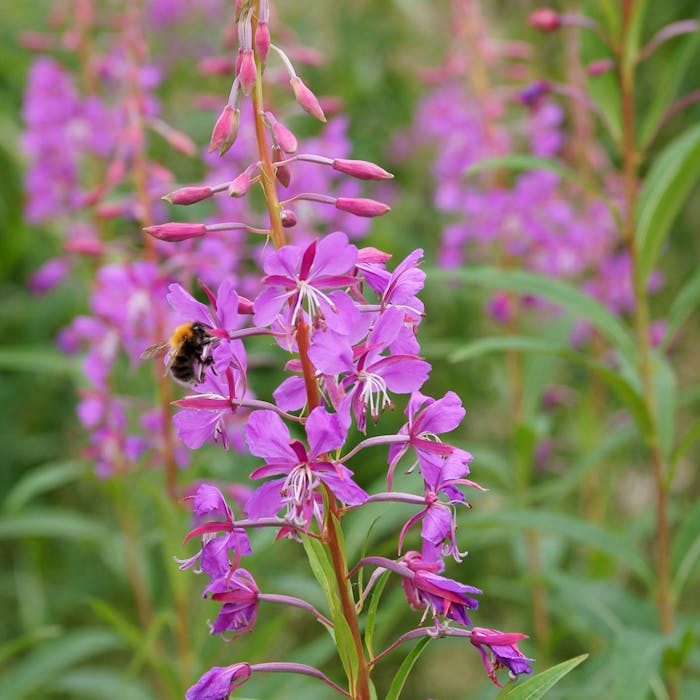
Rosebay Willowherb - a happy pink tonic for dull spots
The rosebay willowherb is a striking wild plant with tall spires of large pink flowers, and leaves that grow like a staircase around the stem. Often found on the fringes of woodland, it presents a set of dense stands in the summer - attracting pollinators and offering a superficial resemblance to the foxglove.
The name reflects the fact that its leaves resemble those of the willow species. Its pink flowers appear from July to September. As a native perennial weed, which spreads by seed and rhizomes (underground stems), the aggressive growth of the plant makes it an unwise choice for most gardens.
Rosebay willowherb thrives on waste ground. It likes to grow in dry, relatively open areas. It can typically be found in forest clearings, beside tracks and trails, and on well-drained banks of rivers. Since it can colonise disturbed sites, even following an oil spill, it is often used to re-establish vegetation. It is common throughout England, Wales and south-east Scotland.
The rosebay willowherb is a 'pioneer species' - those first plants that colonise a barren area with very little competition, such as the sites of forest fires. For this reason it was a familiar sight following the London Blitz of World War Two. Indeed, this wild flower is sometimes known as Bombweed in the UK. As its vivid spires were synonymous with London's revival. As such, it was chosen as the County Flower of London. Today it mingles with buddleias and Michaelmas daisies as a flourishing feature of railway banks, old walls and waste ground.
Rosebay willowherb has a number of practical uses, from natural cordage and clothing, to fire-lighting, Its roots, shoots and flowers are edible, and deployed for various medicinal applications, not all of which are verified. It is said to be good to treat cuts or pus-filled boils by placing a piece of raw stem on the afflicted area.
Further reading
Links to external websites are not maintained by Bite Sized Britain. They are provided to give users access to additional information. Bite Sized Britain is not responsible for the content of these external websites.
